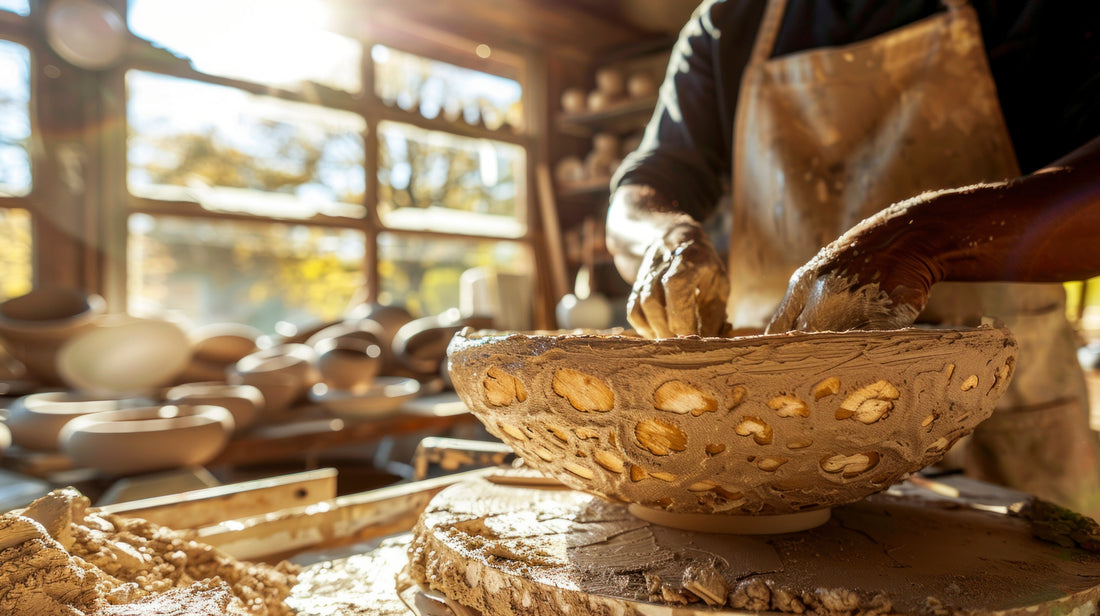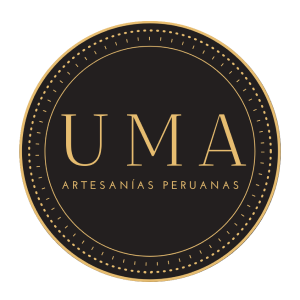
The art of Huamanga stone carving: Techniques and artisanal processes in Ayacucho
Share
A translucent white stone native to Ayacucho holds centuries of history and culture in each carved figure. This is Huamanga stone , a noble material that, when worked with patience and technique, is transformed into pieces full of detail and expression. This traditional art is one of Peru's greatest treasures. In this article, we'll explore the world of stone carving , from its origins to the stone carving tools and carving techniques that bring it to life. Stay until the end to discover how at UMA Peru we keep this legacy alive alongside women artisans.
What is Huamanga stone carving and why is it so special?
Huamanga stone carving is a handcrafted technique that transforms a unique, light-toned, smooth-textured stone into delicate sculptures. Huamanga stone , extracted from the quarries of Ayacucho, is valued for its ease of shaping and its marble-like appearance, although visually lighter.
What makes this art special is the knowledge passed down from generation to generation. Each piece represents a living tradition, combining creativity, faith, and a great deal of patience. It is one of the most recognized expressions of Peruvian stone craftsmanship .
History of stone carving in Peru
The tradition of Peruvian stone art dates back to pre-Hispanic times. Civilizations such as the Wari and Inca already used stone to build, sculpt, and decorate temples, ceremonial objects, and utensils. With the arrival of the Spanish, this skill was adapted to the new religious and cultural context.
It was in Ayacucho that the use of Huamanga stone was consolidated to create religious figures, nativity scenes, crucifixes, and later, decorative pieces with Andean motifs. Thus, stone carving became a form of cultural resistance, artistic expression, and a source of livelihood for many families.
Essential tools and materials for the carver
Chisels and hammers
Chisels are the most commonly used tools for shaping and detailing stone. They are combined with hammers of different sizes depending on the required precision. With them, the artisan gradually removes fragments of stone.
Saws and milling machines
For larger or initial cuts, hand or electric saws are used. Some pieces require routers to create more elaborate curves or finishes, while still maintaining the manual touch.
Protective equipment
Stone carving generates fine dust and fragments, so it's essential to wear safety glasses, gloves, and masks. Health care is key for those who practice this art for years.
How to prepare the stone before carving
Before starting work, the stone must be cleaned and carefully selected. It must be free of cracks or impurities that could affect the result. It is then moistened to reduce dust and facilitate cutting.
Some artisans draw on the stone as a guide, while others prefer to work directly, allowing themselves to be guided by the natural shape of the piece. This first contact with the material defines the style and soul of the work.
Traditional stone carving techniques from Huamanga
Among the main carving techniques , bas-relief work stands out, creating figures that slightly protrude from the surface. There is also high relief, which allows for greater depth and volume.
Another technique used is full or three-dimensional carving, ideal for religious figures or animals. Here, the artist rotates the stone to work all its sides. Some pieces are polished with fine sandpaper, achieving a smooth and luminous finish.
At UMA Peru, we have artisans who apply these techniques with a contemporary approach, without losing their cultural essence. Their creations fuse tradition with modern designs, serving as examples of handcrafted stone products that have a social impact.
What can be done with Huamanga stone?
The possibilities of this stone are endless. Among the main Huamanga stone products are:
- Decorative sculptures: Animal figures and modern geometric shapes, ideal for highlighting any space.
- Romantic jewelry boxes and ornaments: Heart-shaped designs, perfect for gifting or decorating with a special touch.
- Customizable letters: Initials or full words, available in a variety of materials and styles.
- Home decorations: Unique elements that complement interior decor with style and personality.
These sculptures from Ayacucho are valued not only in Peru but also abroad. Their beauty and symbolism make them perfect as decorative pieces or gifts with cultural identity.
Conclusion
Huamanga stone carving is not just a technique; it's a legacy filled with creativity and Ayacucho pride that has adapted without losing its roots.
Understanding this artisanal process is a way to connect with our traditions and appreciate the effort behind each piece. At UMA Peru , we work alongside artisan women who keep this heritage alive with dedication and talent. If you'd like to discover more about these unique creations and the impact they have on their communities, we invite you to browse our categories .
Because when you choose stone craftsmanship , you choose history, art and transformation.
